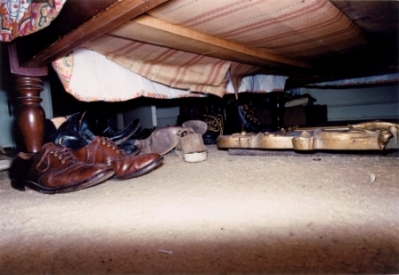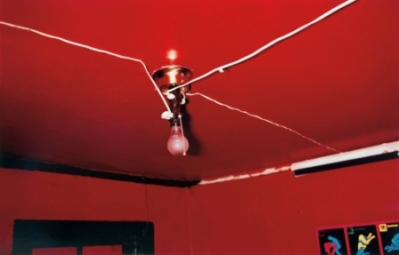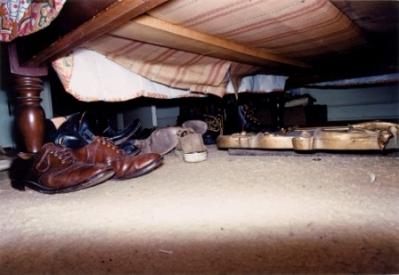It would seem the images of William Eggleston are a form of blank poetry, sensual but not sexy, somewhere in the ether of documentation and artistic wonder where we find him trolling. But who the artist was, I didn’t really know until I met him during the installation of the current retrospective. Were you ever totally off base about someone? I certainly was.
Can the art tell you who the artist is? Based only on Eggleston’s photographs, I guess I really wanted to see him as a hipster channeling country blues or Memphis Slim, for the pictures had that earthy delight, that swell of down-home ready. He seems to possess an idiosyncratic vision that offers a graphic sort of purity; in other words, an image devoid of contextual meaning yet delivering a seductive charge of beauty. His rapacious lens seems to find a sort of theatricality of hyper-country glamour of Dolly Parton and Elvis Presley with a potpourri of hauntingly everyday eye candy, compositional gems caught in casual glances. As for the images, if there are stories, you will have to tell them to yourself. It’s an eye for the ordinary made extraordinary, at times by mere focus. There’s a kind of haphazard, enchanted, social realism, a junk beauty cast aside, around the bend, in the back seat, up the creek, on the lawn, behind the wheel, overhead, alongside, around the corner, outside the door.

William Eggleston, "Untitled (Memphis, Tennessee)," c. 1972, from "14 Pictures," 1974, collection of Adam Bartos, © Eggleston Artistic Trust, courtesy Cheim & Read, New York
I first saw the enigmatic William Eggleston sitting elegantly in beautiful black suit in a tan fold-out chair in the middle of 2nd floor of BCAM, in front of the giant red elevator in which Barbara Kruger’s black and white and red words climb up the wall of the shaft; his grey hair parted to the side; one long leg crossed over the other with his shining aubergine-colored classic shoes blending perfectly and contrasting with his starch white shirt opened at the neck; a loose and untied green and cream bowtie slightly slung to the side. The look spoke volumes!
And when he spoke in a slow, somewhat thoughtful searching manner which reminded me of the British playwright Harold Pinter (“the master of the pregnant pause”), there was a ground shift. It was the moment for which the lilt in his voice was more the tone and charm of a southern aristocrat—Tennessee Williams without the drama. From time to time with his long elegant fingers he would wave them through the air in his halting speech as if they too were language.

William Eggleston, "Greenwood, Mississippi," 1973, collection of Adam Bartos, © Eggleston Artistic Trust, courtesy Cheim & Read, New York
This was a native son, the gentle sophisticated product of Memphis who saw it with a stranger’s eye. A lover of Bach! Yes, he was one native who uniquely saw everything in dreamy, saturated, crazy color and silently worshipped it all. And in doing so, sometimes the images he captured acted upon one or achieved the state that an abstract painting delivers: colliding or converging patterns of color exploding into mere sensation but held down by a not so surreal awareness that it’s a ceiling, or a vague sense of knowing that a powerful lusty color can so easily foster the attraction. And underneath, bizarrely, there’s a silence about the images, a hush, hush, an ironic stillness over and above the physical state the photo presents. So that here was the tough-minded enchanter, William Eggleston, or so it would seem.
Hylan Booker



